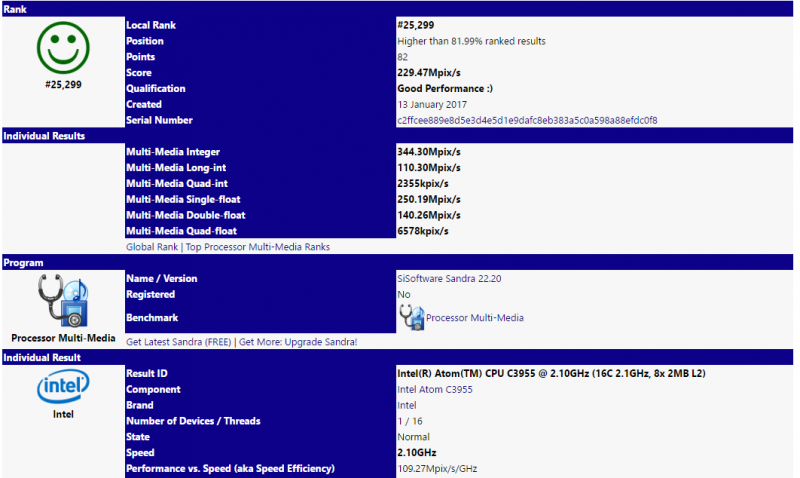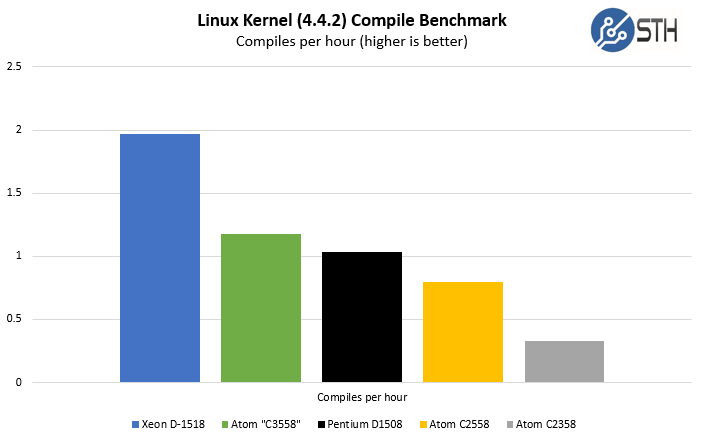We received an anonymous tip that Intel Atom C3955 benchmarks have been posted. The Intel Atom C3955 appears to be a 2.1GHz part with 16MB L2 cache. From our Intel Atom C3000 overview piece, we were expecting 16 core parts to hit the market. Our expectation is that such 16 core chips are still several months from market. This is likely due to the Intel Atom C2000 series bug pushing Denverton release dates back.
We expect that the Intel Atom C3955 is close to the top of the Denverton CPU stack. Even without L3 cache, to maintain low TDP envelopes the chips will need to stay at lower clock speeds.
Here is a link to the result and a screenshot:

One of the more interesting tidbits here is that this particular platform has 1MB L2 cache per core reported. Compare this to the Intel Atom C3338 we are testing which has 4MB L2 cache or 2MB per core. What this points to is that we may see L2 caches of 1MB to 2MB per core as noted in our C3000 series overview piece linked above.
We do expect that these higher-end Intel Atom C3000 series chips, like the Intel Atom C3955, will move into multi-threaded performance of some of the Broadwell-DE (Xeon D-1500 series) chips. We already have seen evidence of this with 2 core and 4 core parts.

Being clear, this was not one of our test platforms. We do not post our benchmarks onto public listing services and we use Linux for embedded CPUs. We also use extremely controlled benchmark platforms. Our next-generation of Linux-Bench already has over 12,000 validation runs on 30 different architectures to validate that we can get consistent benchmarks with proper scaling to within a +/- 0.5% margin. You can see the need for this as we are now testing small clusters of servers for power consumption differences based on cooling. You can see the need for this in our 2U 4-node system testing methodology and one example of this in our Supermicro BigTwin review.




